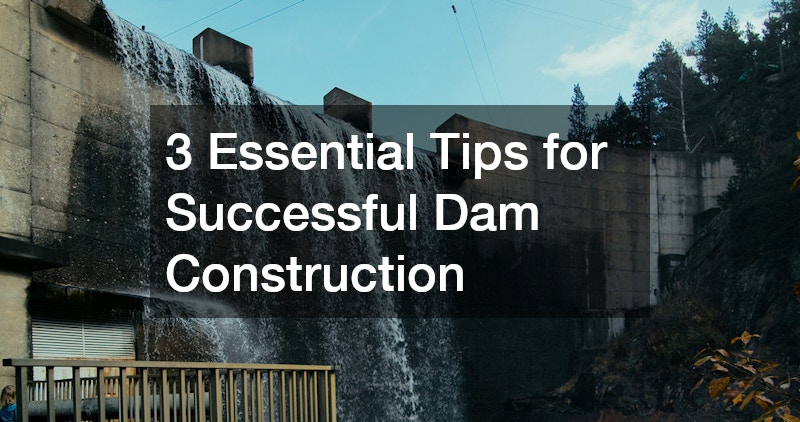As Australia continues to navigate water scarcity, erratic weather patterns and increased demand for agricultural output, dam construction plays a crucial role in water security and sustainable development. Whether for irrigation, livestock flood control or even hydroelectric power generation, building a dam is no small undertaking.
It requires careful planning, adherence to environmental standards and long-term vision.
In this article, we’ll explore three essential tips for successful dam construction — guidance that can help property owners, farmers and developers achieve efficient, safe, and compliant results. Whether you’re investing in a small farm dam or a more complex infrastructure project, these tips will lay the foundation for long-term success.
1. Understand Your Site’s Specific Needs and Constraints
Before any excavation begins, a thorough assessment of the site is essential. No two dam sites are the same, and understanding the unique characteristics of your land, including soil composition, slope, water catchment potential and local biodiversity, will dictate the type and scale of the dam you can construct.
Engaging with a qualified civil or geotechnical engineer can help determine whether the proposed location is suitable. Testing soil for permeability and structural integrity is particularly vital, as poor soil conditions can lead to leakage or dam wall failure. In some areas, clay-based soil might be sufficient to create a watertight basin, while in others a liner or additional compaction methods may be necessary.
2. Prioritise Structural Integrity and Long-Term Maintenance
A dam is a long-term asset — potentially lasting decades if constructed and maintained properly. Therefore, structural integrity must be a top priority. Poor construction not only endangers nearby properties livestock and ecosystems, but also increases the likelihood of repair or replacement expenses down the track.
Proper compaction during dam wall construction, reinforcement with rock or vegetation to reduce erosion and the installation of a reliable spillway system are all essential. The spillway, in particular, helps control overflow and minimises the risk of dam wall failure during periods of heavy rainfall.
Ongoing maintenance is another key aspect of successful dam construction. Regular inspections for signs of seepage, erosion, sediment build-up or damage caused by animals or weather events will help you stay ahead of problems. In many parts of Australia, especially in rural or regional areas prone to drought or sudden storms, proactive maintenance is crucial.
It’s also advisable to install monitoring systems such as water gauges or flow meters to keep track of dam capacity and catchment yield. This information is invaluable in dry seasons, when water usage must be carefully managed to prevent shortages.
3. Embrace Sustainable and Environmentally Responsible Practices
In modern Australia, successful dam construction must strike a balance between function and sustainability. While dams are valuable tools for storing water, they also have the potential to alter natural ecosystems if not properly designed.
To minimise the environmental impact, it’s important to design dams in harmony with the existing landscape. This might involve retaining vegetation around the perimeter, creating buffer zones to filter runoff, and designing spillways that reduce downstream erosion. Additionally, ensuring that native wildlife has access to safe drinking points and is not trapped or displaced by the dam is increasingly expected under environmental codes.
Sediment control is another crucial aspect. Over time, sediment can reduce the dam’s storage capacity, especially in areas prone to soil erosion. Installing sediment traps or catchment grassing can help mitigate this issue and prolong the dam’s lifespan.
For farmers and landholders, there are also increasing opportunities to combine dam construction with broader water management systems, including rainwater harvesting, solar-powered pumps and smart irrigation technology. This integrated approach not only boosts sustainability but may also qualify for rebates or funding under various government incentive programs aimed at improving agricultural resilience.
Final Thoughts
Dam construction is more than just digging a hole and filling it with water — it’s a significant investment that requires planning, expertise and long-term vision. By understanding your site, prioritising structural integrity and embracing environmentally responsible practices, you can ensure that your dam is both functional and sustainable.
Whether you’re a rural landholder looking to improve water security or a developer creating infrastructure to support future growth, working with professional services and complying with Australian standards will go a long way towards success. In a country where water is one of our most precious resources, thoughtful dam construction is a vital part of securing a prosperous future for the land and its people.

